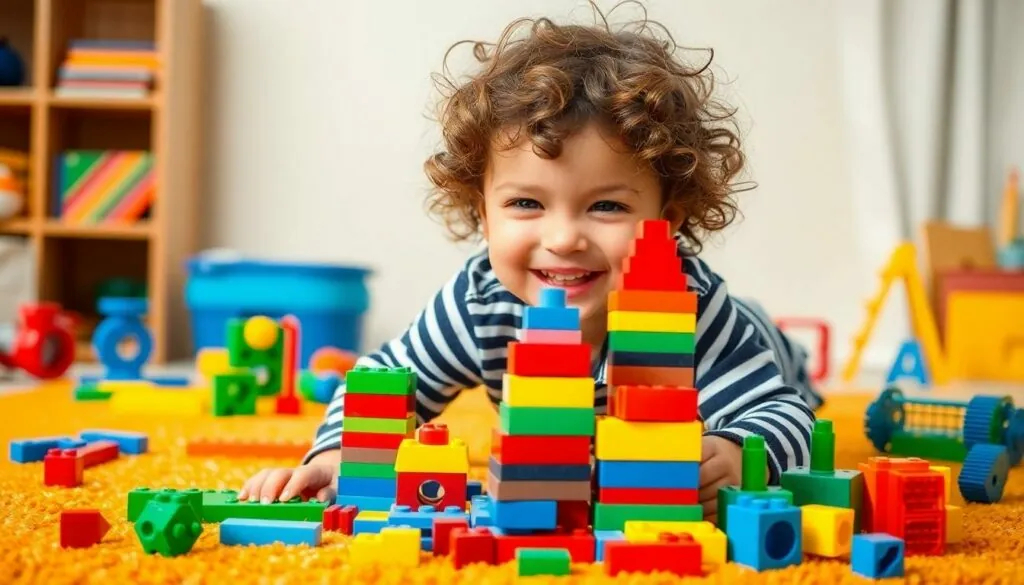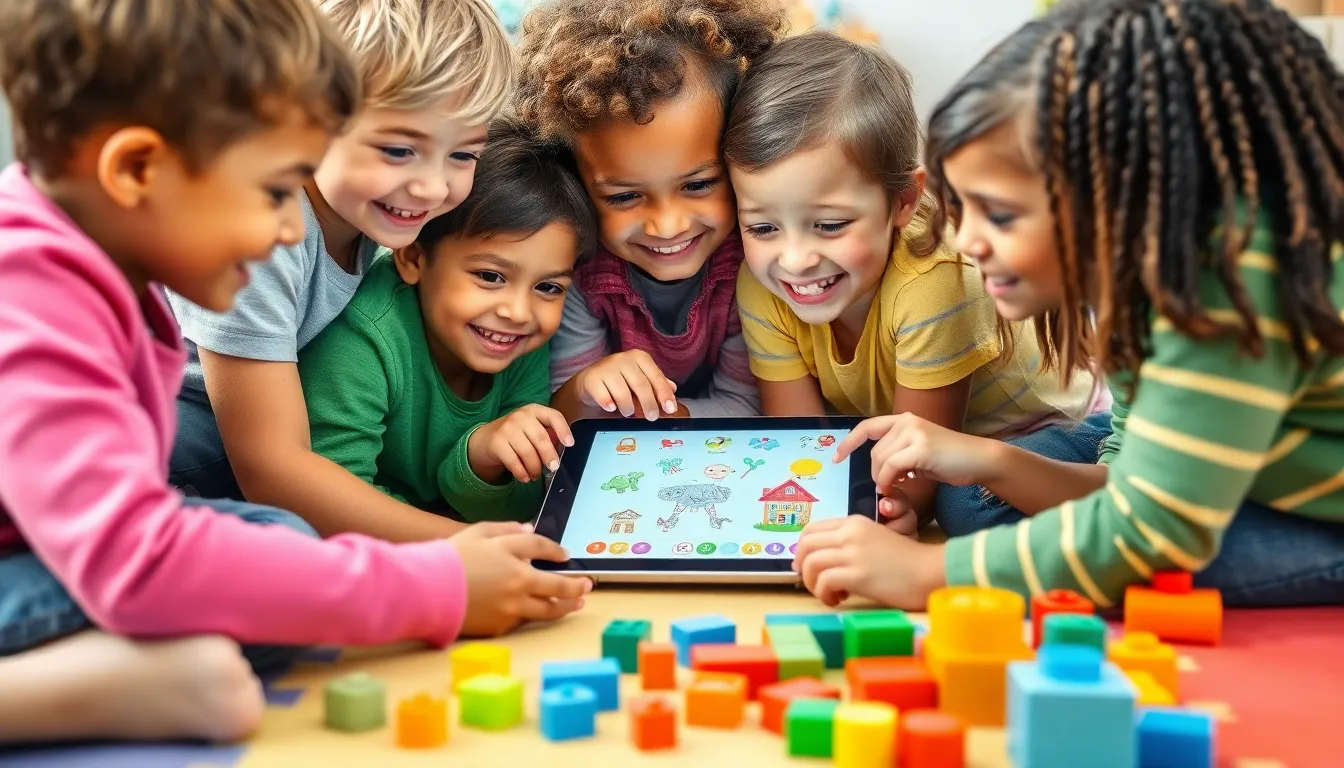In a world where toddlers can master tablet games faster than most adults, why not channel that curiosity into something even more exciting? Enter STEM for toddlers—where science meets playtime and little minds ignite with creativity. It’s not just about building blocks and counting; it’s about sparking a lifelong love for learning through hands-on exploration.
Table of Contents
ToggleWhat Is STEM for Toddlers?
STEM for toddlers encompasses activities focused on science, technology, engineering, and mathematics tailored for young children. Such initiatives encourage toddlers to explore their world through hands-on experiences. Engaging in STEM during early childhood builds a foundation for critical thinking and problem-solving skills.
Toddlers exhibit natural curiosity, making them ideal candidates for STEM exploration. Activities like building blocks enhance an understanding of engineering principles. Science experiments using household items spark interest in scientific processes, allowing toddlers to observe, predict, and conclude.
Play-based learning integrates STEM concepts seamlessly into everyday interactions. Using sorting games helps toddlers grasp basic mathematical concepts while enhancing cognitive development. Exploring nature can teach them about ecosystems and biology in a fun, engaging manner.
Technology plays a significant role in modern STEM initiatives. Apps designed for young learners introduce concepts of coding through interactive games. Educational toys that incorporate technology not only entertain but also promote learning in a meaningful way.
By promoting STEM in toddler education, caregivers and educators ensure these activities are age-appropriate and aligned with developmental milestones. Selecting engaging materials increases the likelihood of sustained interest and participation. Opportunities for exploration should abound, helping children uncover their passions early on.
Fostering a curiosity-driven environment encourages toddlers to ask questions and seek solutions. Continuous encouragement and support in these activities nurture a sense of achievement and confidence as children navigate challenges. Overall, STEM for toddlers serves as a gateway to lifelong learning experiences.
Importance of STEM Learning in Early Childhood

STEM learning holds significant value during early childhood development. Introducing these concepts early lays a strong foundation for future learning.
Cognitive Development
Activities centered on STEM foster critical thinking and problem-solving skills. Engaging toddlers in hands-on experiences encourages exploration. Building blocks demonstrates basic engineering principles, allowing for creative expression. Simple science experiments ignite curiosity about the natural world. They learn to observe and communicate findings while experimenting with household items. Early exposure to these concepts enhances cognitive abilities, encouraging children to ask questions and seek answers.
Social Skills Enhancement
STEM activities also promote social skills among toddlers. Collaborative play in group settings encourages teamwork and communication. Working together on projects strengthens relationships and builds trust. Sorting games help introduce concepts of sharing and cooperation. These interactions provide opportunities for children to express ideas and negotiate solutions. Children learn to respect different viewpoints. Engaging in STEM fosters an inclusive environment where diverse skills and perspectives are valued.
Examples of STEM Activities for Toddlers
Engaging toddlers in STEM can involve a variety of activities that promote exploration and learning. These examples illustrate how simple actions can spark curiosity and foster skill development.
Hands-On Experiments
Experimenting with everyday items showcases science concepts in a tangible way. Parents can create a “sink or float” activity using a bowl of water and various household objects. Toddlers learn about density while predicting outcomes. Another fun experiment involves mixing baking soda and vinegar in a container. This reaction teaches children about chemical processes. Simple gardening projects also provide sensory experiences, allowing toddlers to observe plant growth while understanding biology. Each experiment encourages observation and critical thinking, laying the groundwork for scientific inquiry.
Interactive Games
Interactive games serve as an effective method to introduce STEM concepts. Building block sets encourage spatial awareness and engineering skills through creativity. Shape sorting toys help toddlers recognize geometric shapes, pinpointing early math abilities. Technology can enhance playtime, with apps designed for young learners that engage them in coding games. Using these digital resources fosters problem-solving skills in an entertaining manner. Puzzles featuring letters or numbers might also improve cognitive skills, laying a strong foundation for literacy and numeracy. Each game contributes to holistic development through playful learning.
Choosing the Right STEM Toys
Selecting the right STEM toys for toddlers involves careful consideration of different factors. Ensuring these toys are engaging and suitable enhances learning experiences.
Age Appropriateness
Age appropriateness plays a critical role in choosing STEM toys. Toys labeled for ages 2-4 foster exploration of basic scientific concepts and fine motor skills. For instance, building blocks appeal to toddlers by encouraging creative construction and problem-solving. Similarly, shape sorting games teach toddlers about geometry while developing hand-eye coordination. Selecting toys that match developmental stages maximizes engagement and promotes enduring interest in STEM activities.
Safety Considerations
Safety considerations significantly influence the selection of STEM toys. Toys must feature non-toxic materials to ensure children’s health. Avoid items with small parts, as they pose choking hazards for toddlers. Parents should check for sturdy construction, minimizing risks of breakage. Manufacturers often provide guidelines to help identify safe options. Choosing well-reviewed toys based on safety standards enhances parental confidence and encourages enjoyable learning experiences. Prioritizing safety alongside educational value sets the stage for successful play and exploration.
Tips for Parents to Encourage STEM Learning
Creating a supportive environment for STEM learning significantly enhances toddlers’ engagement. Parents should fill spaces with various materials like building blocks, art supplies, and simple science kits. A designated area for exploration encourages curiosity and hands-on activities. Organizing items for easy access sparks interest and promotes independent play.
Engaging with toddlers during STEM activities strengthens connections and supports learning. Parents can ask open-ended questions, guiding children to think critically. Showing enthusiasm about discoveries fosters a love for exploration. Joint activities like gardening or simple experiments hold the potential for meaningful interactions. Sharing experiences creates opportunities for toddlers to articulate their thoughts and ideas while deepening their understanding of concepts.
Embracing STEM for toddlers opens doors to a world of exploration and discovery. By engaging young minds through hands-on activities and play-based learning, caregivers can nurture curiosity and critical thinking skills. Early exposure to STEM concepts not only lays a strong foundation for future academic success but also fosters social skills through collaborative play.
Choosing the right materials and creating a supportive environment enhances the learning experience. Parents and educators can inspire a love for learning by participating in activities together, sparking meaningful conversations. Ultimately, fostering a STEM-rich environment empowers toddlers to explore their interests and build confidence, setting them on a path to lifelong learning.






